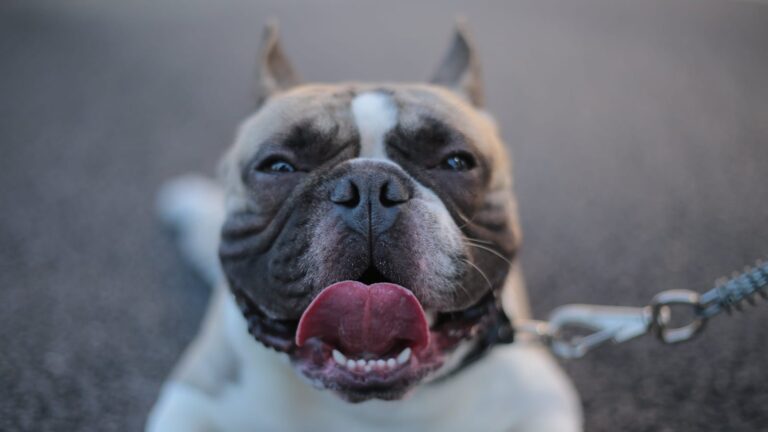When you first encounter an American Bully, it’s easy to be misled by their imposing appearance. Their muscular build and powerful jaws might give off an intimidating vibe, but beneath that tough exterior lies a breed with a surprisingly friendly disposition. American Bullies were initially bred to be cherished family members, mainly when little ones are around.
In reality, American Bullies make fantastic pets, known for their charismatic personalities, playful antics, and gentle hearts. They are not the fierce image you might imagine at first glance; instead, they’re wonderful companions, especially when interacting with children.
Considering the responsibilities of pet ownership, it’s crucial to think about the well-being of your American Bully. Pet insurance can provide peace of mind by covering unexpected medical expenses.
Are American Bullies Good With Babies?
American Bullies are renowned for their unwavering loyalty and devotion to their families. They often exhibit a nurturing and protective attitude towards babies, treating them like their own.
Bullies are known to go to great lengths, even risking their safety, to ensure the well-being of a family member. However, exercising caution and taking steps to bring out the Bully’s inherent affection for children is essential.
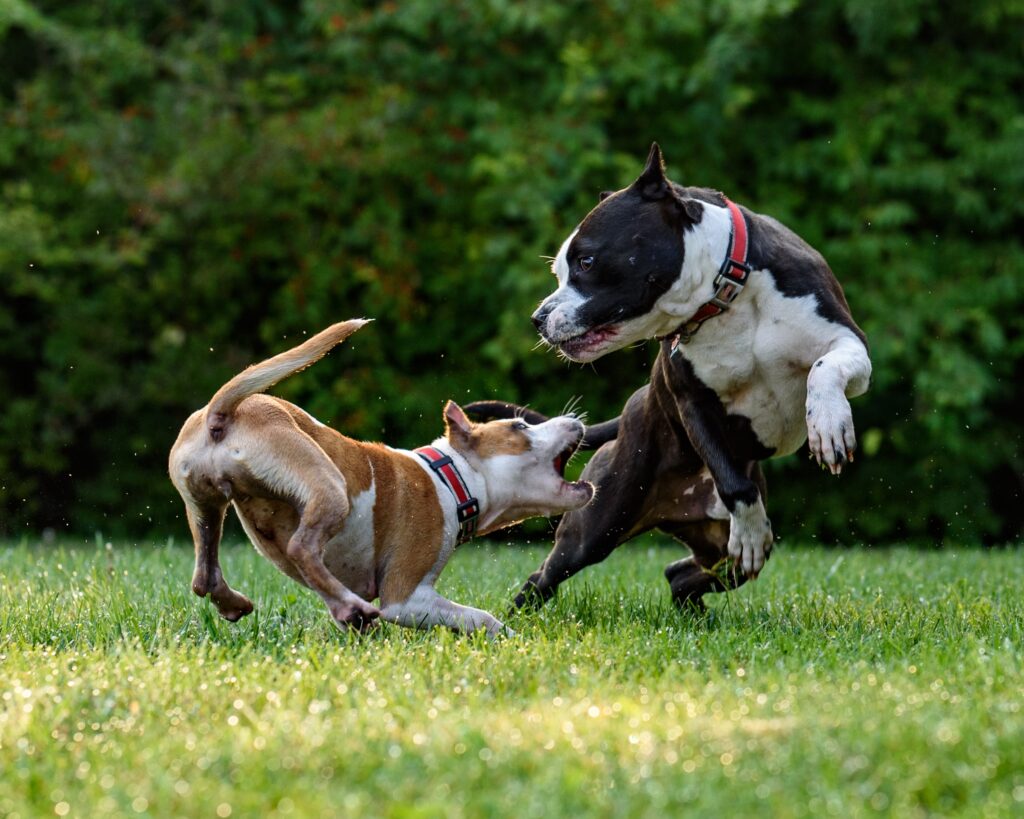
In summary, American Bullies can be wonderful companions for babies despite their initially intimidating appearance. The key lies in proper training and socialization to foster a loving bond between them.
Are American Bullies Suitable as Family Pets?
Here are five critical points if you’re considering welcoming an American Bully into your family as a potential nanny dog.
American Bullies Are Naturally Gentle
American Bullies are known for their inherently gentle and non-aggressive nature. However, it’s essential to emphasize responsible ownership when considering these gentle giants, powerful dogs.
Numerous studies have indicated that aggression is not innate among American Bullies. The misconception of aggressiveness is often associated with Pitbulls, but research has consistently shown that a dog’s behaviour is
primarily influenced by its environment and training rather than genetic predisposition.
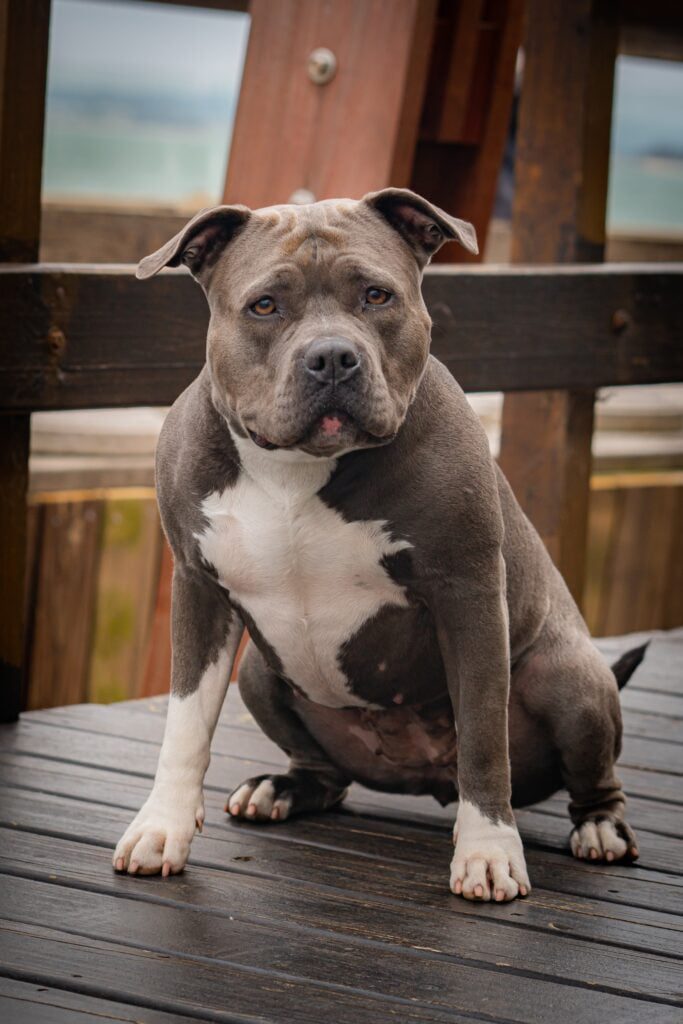
Ultimately, it boils down to being a responsible owner and providing proper training and socialization for your American Bully. With the proper care, these dogs make gentle and devoted companions, always eager to earn your approval.
American Bullies: A Family-Friendly Breed
The American Bully is a relatively recent addition to the world of dog breeds, emerging in the 1980s and evolving throughout the 1990s. It was developed using the Pitbull as a foundational breed and infusing characteristics from several other breeds, including the American Bulldog, English Bulldog, Olde English Bulldogge, and Mastiffs.
The American Bully Kennel Club (ABKC) officially recognized this breed in early 2004, while the United Kennel Club (UKC) granted recognition as an official breed in 2013. Breeders’ primary objective was to create a distinct breed that retained the American Pitbull’s appearance but with added muscle mass and distinct class divisions.
However, a crucial focus was intentionally reducing the potential aggression associated with Pitbull genetics. The result is a breed known for its low prey drive while still displaying the iconic “Bully” traits.
By infusing American Bulldog traits into the well-known American Pit Bull Terrier (APBT), breeders achieved a more composed and reliable version of the Pitbull.
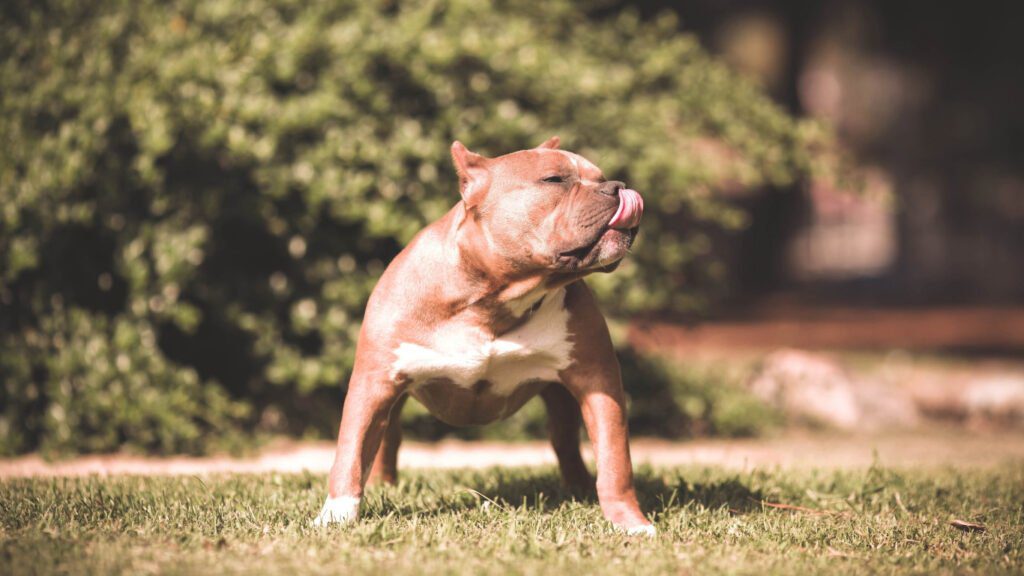
The American Bully’s composed demeanour makes it less likely to inadvertently knock over your toddler during playtime, making it an ideal choice for families seeking a gentle and affectionate canine companion.
Responsible Ownership: Key to American Bully Behavior
American Bullies are often unfairly criticized by the public, even though the source of aggression in nine out of ten cases can be traced back to irresponsible owners. A comprehensive peer-reviewed study has shed light on the fact that aggression tendencies in Bullies are more closely related to their owners’ behaviour than the breed itself.
Owners of aggressive American Bullies are statistically more likely to exhibit violent tendencies themselves, often displaying deviant behaviours such as child abuse, domestic violence, or involvement in violent crimes against others.
Given the breed’s strong-willed and physically powerful nature, it becomes paramount for owners to provide proper training and socialization for their Bullies. A well-trained and content American Bully is likelier to reveal its inherently baby-loving and gentle side.
It’s important to note that American Bullies, particularly when it comes to children, can be exceedingly protective of their human family members. Therefore, owners should always supervise interactions between children and their Bully companions. Sometimes, children’s actions may unintentionally mimic aggressive behaviour, triggering the Bullies’ defensive instincts despite their gentle nature.
The Social Nature of American Bullies: Human Interaction Matters
American Bullies are renowned for their friendly nature and strong desire for human interaction. While they don’t require extensive exercise, they need regular socialization with humans and other dogs to stay mentally stimulated.
An American Bully left in isolation is at risk of developing depression and, in some cases, may exhibit signs of aggression. Owners must introduce their Bullies to people and provide ample opportunities for socialization from an early age. This early exposure helps the Bully develop appropriate social skills and ensures they are comfortable around people as they grow older.
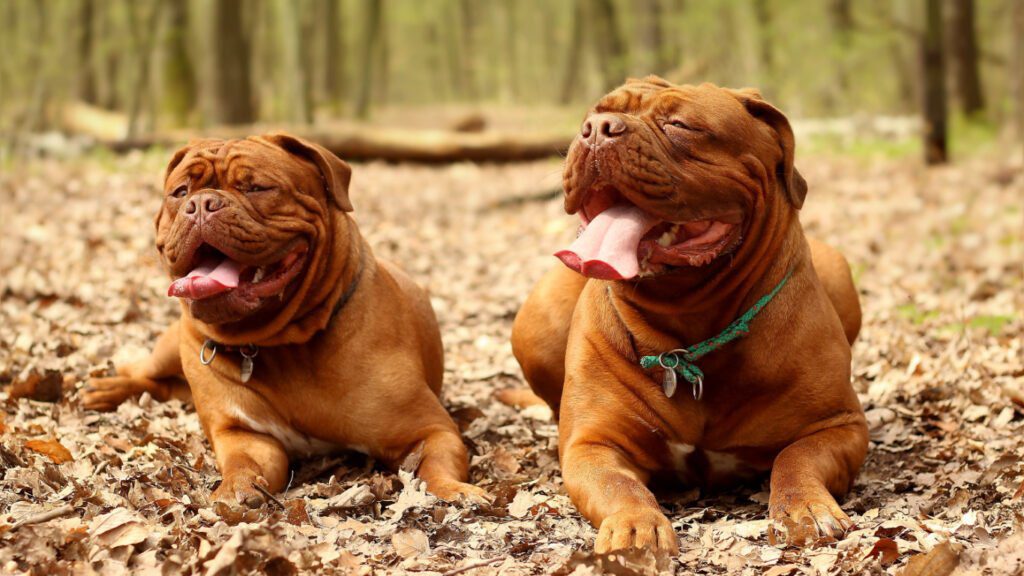
Positive praise plays a significant role in bringing out the best in the American Bully breed. They thrive on positive reinforcement and respond well to it, making it an essential component of their social and behavioural development.
Ensuring Safety: The Golden Rule for American Bullies and Babies
While American Bullies are known for their beautiful interactions with young children, it’s essential to adhere to a simple golden rule:
Dogs should never be left unsupervised with babies and children under ten.
This rule applies to all dog breeds, as even the gentlest dogs can unpredictably react to their environment. Various factors, such as pain, possessiveness, fear, or protectiveness, can trigger unexpected responses from a dog when interacting with a child. Therefore, constant supervision is crucial to ensure the safety of both your pet and your little ones.
Preparing for a Positive Introduction: American Bullies and Babies
Before bringing your American Bully and your child together, ensuring that both are well-prepared for a positive interaction is crucial. A negative experience can leave a lasting impression, so consider these important factors:
Teaching Your Child Proper Dog Etiquette
Children may sometimes unintentionally be rough with pets, especially dogs like American Bullies. Educating your child on how to interact respectfully with dogs and promptly intervening if any rough or unkind behaviour occurs is essential.
Emphasize to your child never to pull the Bully’s ears or tail, as this can be hurtful and distressing for the dog.
Training Your American Bully
Before introducing your Bully to your child, ensure that your dog is well-socialized and understands proper behaviour in the company of others. Practical training can prevent potential mishaps and help create a harmonious environment during the introduction.
Benefits of Pet Insurance:
Pet insurance offers a range of benefits, from covering accidents to providing financial protection in case of illnesses. Explore various pet insurance options to find the one that suits your American Bully’s needs.
Introducing Your American Bully to Your Baby: A Gentle Approach”
Making a proper introduction between your American Bully and your baby is essential for a positive start. Follow these steps to ensure a smooth and safe interaction:
- Allow a Friendly Sniff
- Let your Bully approach the baby or child calmly and have a gentle sniff to become familiar with their scent.
- After the Bully has had its sniff, encourage the baby or child to extend the back of their hand for the Bully to sniff as well.
- Maintain a Calm Environment
- Ensure that both your Bully and the baby are in a relaxed and calm state before proceeding.
- When your dog feels comfortable and receptive to the child’s presence, you can gently guide the baby or child to pet the Bully.
- Supervise Playtime
- While American Bullies are generally gentle, they are also powerful and energetic.
- To prevent accidental knocks or rough play, monitoring their interaction closely is essential.
- Encourage Gentle Play
- During the initial interactions, encourage gentle and calm play between the Bully and the child to minimize the risk of accidents or injuries.
Following these steps can ensure a positive introduction and promote a safe and harmonious relationship between your American Bully and your baby or child.
Common Concerns and Clarifying Misconceptions About American Bullies”
Parents often express concerns about the safety of their children around American Bullies. These concerns are often rooted in a longstanding misconception that American Bullies are inherently aggressive and pose a threat.
It’s important to dispel these misconceptions and understand the reality. Here’s the truth about American Bullies:
Appearance Can Be Deceptive
- American Bullies may appear intimidating due to their muscular build and robust appearance. However, this does not equate to aggression.
- It’s crucial to avoid judging these dogs solely based on their looks.
Misidentification
- One of the reasons for concerns and misconceptions is the misidentification of American Bullies as Pitbulls. This confusion arises because of their physical similarities.
- American Bullies are not fighting breeds, and their muscular physique does not make them hostile towards children.
The Reality
- Statistics show that American Bullies are not responsible for many dog-biting incidents. Only a tiny fraction of cases involving dog bites in the past decade can be attributed to American Bullies.
- They are not inherently aggressive dogs.
An Excellent Family Pet
- American Bullies are known for their gentle and friendly nature, making them excellent family pets for families with babies.
Always Take Precautions
- Regardless of your dog’s breed, taking precautions is essential when introducing any dog to your children. Proper training, socialization, and supervision are crucial to ensuring a safe and positive interaction.
Safety Precautions When Having an American Bully as a Family Pet
While the American Bully can make an excellent addition to your family, responsible ownership requires taking necessary precautions to ensure a safe and harmonious environment for everyone. Here are some essential safety measures to consider:
Early Behavior Training
- To prevent potentially awkward or unsafe interactions with children, adults, or other animals, providing behaviour training to your American Bully from an early age is essential.
- Behaviour training helps your Bully develop good manners and understand appropriate behaviour in various situations.
Socialization is Key
- Socialization is vital to bring out the gentle and friendly nature of your American Bully.
- Exposing your Bully to different people, animals, and environments helps them become well-adjusted and confident companions.
Body Control Training
- Given their robust build, it is crucial to teach your Bully how to control its movements, including its jaws, paws, and overall body.
- Enrolling them in a training school or seeking guidance from a professional dog trainer can be highly beneficial in achieving this.
Never Leave Them Alone
- Under no circumstances should you leave your child and the American Bully alone together, especially if they are very young.
- Always supervise their interactions to ensure the safety of both the child and the dog.
Following these safety precautions and providing proper training and socialization, you can enjoy a fulfilling and safe experience with your American Bully as a cherished family pet.
Frequently Asked Questions About American Bullies
Is the American Bully a Good Family Dog?
Absolutely! The American Bully is an exceptional family dog known for its gentle, calm, and cheerful nature. They are particularly well-suited for families with children and require minimal maintenance.
Can American Bullies Become Aggressive?
Like any dog breed, American Bullies can exhibit aggression if not properly trained and socialized. To prevent such behaviour, it’s crucial to begin training and socialization at an early age.
Are American Bullies Prone to Destructiveness?
American Bullies possess powerful jaws and a strong bite, capable of damaging items in their environment.
To keep your belongings safe, it’s advisable to provide them with durable toys that can withstand their natural chewing instincts and curiosity.
What Is the Personality of an American Bully?
American Bullies are known for their charismatic personalities, characterized by a calm and affectionate demeanour.
They are highly energetic but also possess a remarkable sense of when to be gentle.
American Bullies are recognized for their unwavering loyalty and protective instincts toward their owners and families.
Is pet insurance necessary for American Bullies?
Pet insurance is highly recommended for American Bullies. It can help you manage unexpected veterinary costs effectively. Explore different pet insurance plans to find the right one for your furry friend.
Conclusion
American Bullies are beautiful additions to your family, forming strong bonds with your children. While no breed is exempt from occasional mishaps, responsible ownership plays a significant role.
Your proactive efforts in nurturing a positive relationship with your Bully are essential. Their behaviour largely depends on your training and care. A dedicated owner fosters a well-behaved dog, and a well-behaved dog becomes a cherished and loyal friend.
- How to Start Feeding Your Dog Raw Food
- How to Teach an Old Dog to Use a Pee Pad Successfully
- Unlock Your Dog’s Superfood: 6 Essential Nutrients They Thrive On!
- Purina Pro Plan vs Blue Buffalo: Unveiling the Best for Your Pup
- Black Mouth Cur’s Choice: Premium Dog Food Guide


